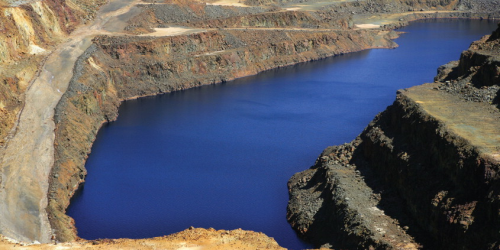
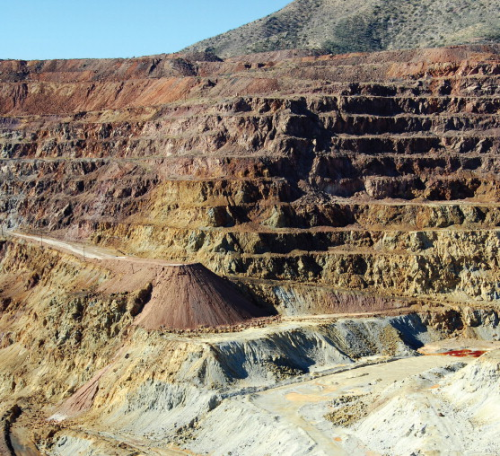
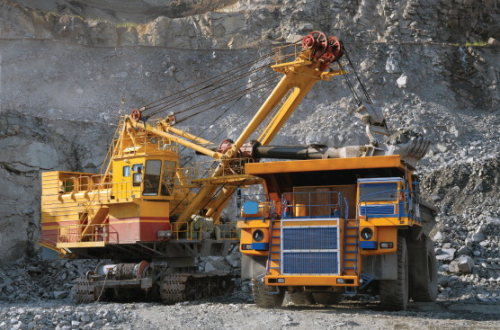
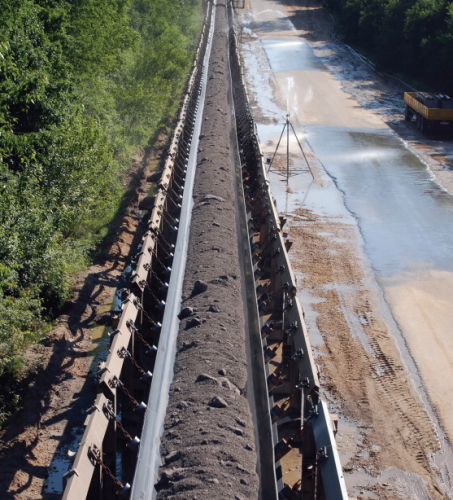
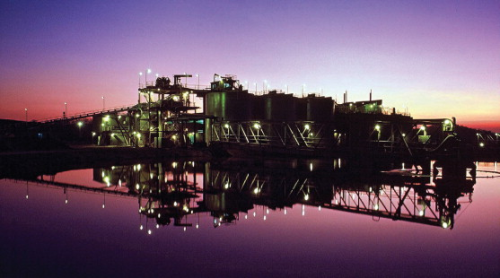
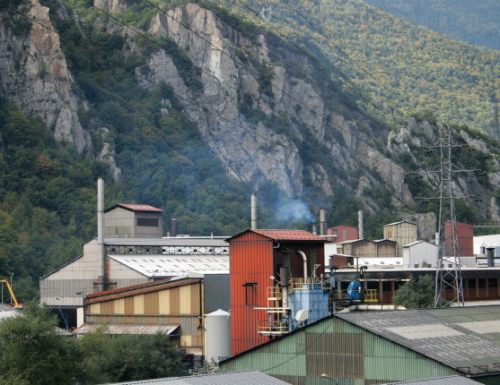
A pdf version of this article is available in the 'Download' section on the right hand side.
The industrial sectors involved with the extraction from the earth of mineral resources include:
• the extraction, including mining and quarrying, of fossil fuel materials, and their subsequent processing to usable fuels; and
• the mining and quarrying of non-energy resources, both metal ores and non-metallic minerals, and their conversion to metals and non-metallic products.
The first of these, the energy materials, is the larger, about twice the size (in terms of filtration market share) of the non-energy sector. The energy materials sector is not covered by this article, which deals only with the second group of industries, including:
• all mining and quarrying, for non-energy source materials, metallic and non-metallic;
• the processing (‘dressing') of the mined materials to concentrate the required metal or mineral;
• the production of ferrous and non-ferrous metals from their ores;
• the making of simple metal products and fabrications; and
• the making of products from non-metallic minerals (such as glass, ceramics, bricks, and cement).
These are quite mature industries, in which no great change in processes has occurred for a long time. The market for filtration and related equipment has thus seen no major change in demand, such as has been created in other sectors with major changes in production processes. There have, of course, been developments of some consequence, such as the bacterial processing of low-grade ores and processing residues, but they have not altered the general structure of the sector. The major changes in mining have come mainly in the geographical setting for the sector's activities.
As a result, the mining and metals sector of the filtration market is expected to show below-average growth over the next few years, from the point of view of new processes – but will get carried along with increasing global demand for the sector's products, once the impact of the current recession fades away. It is not expected that 2009 will have shown any real growth in market size, despite the strength of the Chinese component. Annual growth rates are then expected to climb to more than 6% per annum, by the end of the next five years.
The market for filtration and related separation equipment (including spare parts) is expected to have been about $1.2 billion in 2009, for the non-energy mining and mineral sector, and this is expected to rise by about 30% by 2014. This market size represents a share of about 2.5% of the total global market, although the share will be somewhat higher of the sedimentation segment of that market, of which the mining and mineral industries are significant users.
Industrial processes
The two components of the extractive industries – energy and non-energy – differ also in the nature of the extraction process. The energy materials are produced from the ground in a reasonably concentrated state, and subsequent processing involves refining with relatively little waste (except perhaps for coal and oil shales – and, as reserves become exhausted, the processing will become more difficult). By contrast, many metallic ores occur naturally mixed with large quantities of unwanted material – gangue – from which they have to be separated: the mineral dressing process. The proportion of waste tends to increase the more valuable the product metal, because high value products (such as gold or platinum) can justify the cost of extracting and processing low-grade ores. In many cases, the nature of the materials in a natural deposit, metal ore on the one hand and gangue on the other, may be so different – in density or surface properties – as to make their separation relatively easy.
Much of the sector is concerned, however, with the production of large quantities of solid materials, such as sand and other building aggregates, and sand as a raw material for glass; salt (including alkali production), soda ash and related sodium compounds; sulphur, mainly for sulphuric acid production; lime for cement; clay for bricks; phosphate rock for fertilizers; and, of course, the whole range of metallic compounds: iron ore for steel and other ferrous metals, bauxite for aluminium, and the ores of copper, lead, nickel, tin, etc, not forgetting titanium dioxide as a pigment. The scale of the operations used for these processes frequently requires the use of large, robust separating equipment.
The ‘mineral dressing' industry (i.e. the concentration of valuable ore materials out of its unavoidable mix with unwanted solids) is a good example of the employment of a very wide range of separation equipment, for use once the mined material has been comminuted to the state where the individual particles are each largely composed of one or other of the component materials. Where this degree of distinction is not possible by size reduction alone, then the processing must continue in the liquid state, by dissolution in acid, for example.
The basic dressing operations are major users of bulk sedimentation equipment, especially froth flotation and gravity sedimentation systems. Cyclones and hydrocyclones are much used, as are sedimenting centrifuges. The nature of the materials to be separated may allow the use of heavy media separation, or of magnetic or electrostatic precipitators.
At this stage of the production process, filtration is largely used in the form of dry screens, stationary or vibrated, supplemented by devices such as shaking tables, jigs (using fluidised beds) and spiral separators. Filtration has a much more significant part to play in the process operations for the treatment of metallic ores and non-metallic minerals, once they have been classified in the dressing stages, where much of the processing and recovery take place in suspension in water. The equipment used here, such as vacuum belt filters or band presses, can be very large.
The production processes for metals from their ores, and of simple metal products, do not have this same importance for process filtration applications, except in the wet processing of non-ferrous metal ores, which is a growing field for separation equipment. Utility applications, however, are important in all parts of the sector, with widespread use of recycled coolants, and with many hydraulic and pneumatic systems, especially in rolling mills, for example.
The corporate context
The earlier part of the last decade saw some major corporate changes within this sector, including the merger of the two giant minerals companies BHP and Billiton, and the take over of Pechiney by Alcan to make a bigger rival to Alcoa in the aluminium industry, culminating in the formation of Arcelor (from the merging of Arbed, Usinor and Aceralia), and its combination with Mittal, to form ArcelorMittal, by far the largest steel-making company.
In national terms, China has become the largest producer of steel, with 37.5% of global output, most of which is currently being consumed internally by the rapidly growing Chinese economy. ArcelorMittal produced about 10% of the global output in 2008, with over 100 million tonnes, 2¾ times greater than that of the second biggest supplier, Nippon Steel. China's largest producer, Baosteel came third, just behind Nippon Steel, with at least seven other companies in the 20 to 35 million tonnes range. Although the top ten producers in 2008 made nearly 30% of the global output, the steel industry is still thought to be too fragmented, compared, say, with aluminium, copper and cement.
Another major merger has been the acquisition of Alcan by Rio Tinto, although the aluminium industry is still led by Rusalco, and then Alcoa. Other world leading producers are Codelco (copper), Vale (iron ore), Norisk Nickel (nickel) and Cemex (after a number of mergers to lead the cement market).
More recently, merger activity has involved the mining giants, with BHP Billiton (the largest) rejecting Rio Tinto (the second largest), and Xstrata (the fourth largest), having successfully acquired Prodeco from Glencore, being rejected by Anglo American (the third largest), and by Lonmin (the third largest platinum miner).
The global context
Currently there is considerable concern over the availability of iron ore. China is taking all that it can get to feed its voracious steel industry, and Chinese companies are seeking overseas purchases, so far, as with Chinalco and Rio Tinto, with not a lot of success, although Baosteel has acquired a stake in Aquila Resources.
One of the main problems with mineral resources (including coal, oil and gas), of course, is their uneven distribution around the globe. This is particularly true for the rare-earth metals, of increasing value as components of electronic apparatus, where 90% (some say 95%, or even 98%) of global production comes from China – which is not being very free with its exports. In this context, global warming may come to have global benefits, as Greenland is proving to have enormous rare-earth reserves that are being exposed as the glaciers recede from Greenland's shores. Though slow to develop, Kazakhstan is also appearing as a big potential source.
Apart from South Africa, the African continent is a mass of undeveloped riches as far as mining and metals are concerned, but, sadly, many of these riches are in the hands of rogue states, with access very difficult, if not impossible. Until the whole sub-Sahara region becomes more stable, then such access will continue to be denied – and the relevant states will continue to be poor. The benefits that can accrue from sustainable commercial exploitation are exemplified by Rio Tinto's recent agreement with Mongolia to develop a huge copper deposit – at a stroke at least doubling the country's income.
There has recently been turmoil in the trading of metals, partly occasioned by the global recession, but partly also by the huge demand for iron ore and other materials by the fast growing economy of China (and the other BRIC economies). The metals commodity index (effectively a measure of global pricing) published by the Economist is based on a 2000 value of 100. This had risen to nearly 250 by the beginning of 2008, an annual average increase of about 12% (well above GDP growth). By the late spring of 2008 it had risen to over 300, but in the final third of the year it plummeted to less than 120. In spring 2009 it started to rise again, reaching 200 by August, and ending the year at over 230. This sort of behaviour is making metals trading very difficult to forecast, while the gold market has been experiencing steady price rises, reaching $1200 per ounce at the start of 2010, from a figure of $320 per ounce in 2002. The price of aluminium has gone up 25% over the last year, tin by 35%, nickel by 60%, zinc by 70%, copper by 100% and lead by 125%.
Market prospects
On the assumption that the present signs of recovery continue to bring the end of the recession, then the economic conditions in this market sector can be expected to return to the sort of growth rates described earlier in this article. Among the factors driving the growth are:
• renewed demands for structural materials as economies everywhere recover;
• continued escalation in demand for silicon and the rare-earth elements for use in semi-conductor and other electronic applications, with even greater demand possible when renewable energy systems (such as solar thermionics) begin to fulfil their promise;
• pressures (mainly from limited access to strategic metal sources) that will expand prospecting for new metal ore deposits – with Greenland and central Asia as major targets – albeit probably in less hospitable regions;
• processes will be developed to allow treatment of less concentrated deposits, and even the return to spoil heaps from earlier operations, to recover value from tailings;
• further development of biochemical processing routes, especially for low concentration resources; and
• increased use of hydrometallurgical processing leading to a need for high specification filtration equipment.
One of the key thrusts from discussions (and a few actions) on global warming abatement, coupled with a realisation of global resource shortages, has been the recognition of the need for the whole world to work towards a more sustainable lifestyle. Sustainable development of existing and new sources of metals and minerals, in practice rather than just a subject for international conferences, should finally result in changes in processing methods, with greater efficiency as a key design parameter.






